 |
  |
 |
  |
Nirmala Paniker - Venugopal SK e-mail: venu.sreesankara@gmail.com December 12, 2020 As part of the series paying my tributes to some of the finest gems in the world of Mohiniattam who gave their life and times promoting the dance form, this piece is on Guru Nirmala Paniker of Natana Kaisiki, Irinjalukkuda, Kerala. I came to know of Nirmala Paniker teacher, through a Facebook post by her disciple Sandra Pisharody. I remember it was the 70th birthday of her teacher that Sandra dedicated a beautiful composition honoring her Guru. It was a marvel of a performance that you seldom get to see with so much perfection in the movements and abhinaya. I was so impressed by her dancing skills that I did a small research to find out more about her and her school of learning. Thanks to FB, I could further establish contact with the artiste and came to know as to how from the age of 5 she was learning from Nirmala Paniker (almost like under Gurukul system). I took the phone number of her guru and spoke to her followed by a visit to her home in Irinjalakkuda to know more about her. 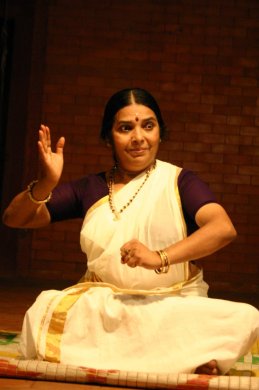 Nirmala Paniker was born at a place called Piravom, Ernakulam District, Kerala into a family of repute in terms of cultural traditions with a high degree of respectability in the social front. Her father C.N. Rama Paniker and mother Bhavanikkutty Amma watched her show glimpses of brilliance in dance quite early, which in her words was inherited by birth. She grew up watching the rich cultural heritage of Kerala unfold in front of her through various art forms in display during those days which had its influence on her. This prompted her parents to put her under the training of Shadow Gopinath in semi-classical/ folk dances right at the young age of 5. Along with formal education, she continued with her dance training till the age of 17 through these private classes and then joined RLV Fine Arts Academy, Thrippunithura, where she completed diploma and post diploma in Bharatanatyam (Kalakshetra style) under her teacher Kalakshetra Vilasini. It was during her diploma time at the age of 19, she started learning Mohiniattam from Guru Kalamandalam Kalyanikkutty Amma. She fondly remembers her learning period there, which was more or less like Gurukulam system. She firmly believes that it is those 4/5 years of learning under the great guru, which attracted her so much to Mohiniattam and made her stay focused on this dance form alone for the rest of her life. She continued learning from Kalyanikkutty Amma even after she got her job and shifted to Lovedale, Ooty, making it a point to be with her teacher during vacation time every year. She didn't stop at that though, and decided to undertake research on techniques and repertoire of Mohiniattam and discovered the forgotten chapters by reviving the desi aspects called 'Poli,' 'Easal,' 'Kurathi' and 'Chandanam'. She had also undergone a one month course in Kerala Kalamandalam during that time, training under Kalamandalam Sathyabhama and Kalamandalam Padmini. She was by nature very much interested in traditional art forms of Kerala like Thiruvathirakkali, Nangiar Koothu and Koodiyattam. While she was exposed to Thiruvathirakkali as a commonly practiced art form right from her childhood days, she also did advance learning in it from Bhanu Asan from Thiruvananthapuram, Lakshmikkutty Amma from Alappuzha and Savithri Brahmini Amma from Irinjalakkuda. Out of her curiosity to learn the intricate abhinaya aspects in Nangiar Koothu, she landed up at the home of a very reputed guru in Nangiar Koothu, Villuvattathu Kochukutty Nangiaramma in Kottayam. She hardly spent a day with her but the plethora of information she gathered over there generated a lot of enthusiasm in her to pursue the process of such interactions in future too. With the reference she got from Kochukutty Nangiaramma, she met Kunjippillakkutty Nangiaramma at Irinjalakkuda who was yet another famous exponent of Nangiar Koothu. She kept that contact alive for a long time with periodic consultations on the aspects she wanted to absorb from this very beautiful traditional dance form of Kerala. With this background of her closeness with tradition, she sought to find a common link between Mohiniattam, Nangiar Koothu and Thiruvathirakkali. She also got her chance learning various aspects of hastha mudras (hand gestures) and nayanabhinaya from Guru Ammannur Madhava Chakyar. She could very cleverly amalgamate all that she had learned from these learned gurus and also from the research she did on the old texts of 'Sangha kalam' into the dance form she always considered her first love, Mohiniattam. The 'Prayog Padhathi' she devised on her own with practical manifestations through using the body and eye coordination so well, with powerful expressions was so unique that it added a new dimension to the way Mohiniattam was being performed till then. She managed this beautifully without moving away from the basic style she learned from Kalamandalam Kalyanikkutty Amma, who she considers as the ultimate guru and mother of Mohiniattam. A brief stint of 6 months of learning Kathak and Odissi also happened in her life under the able guidance of B.B. Acharya at Acharya Kalamandir, Jamshedpur, which was purely out of academic interest. 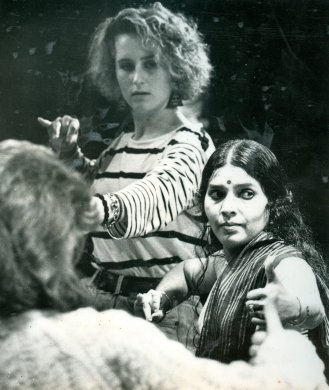
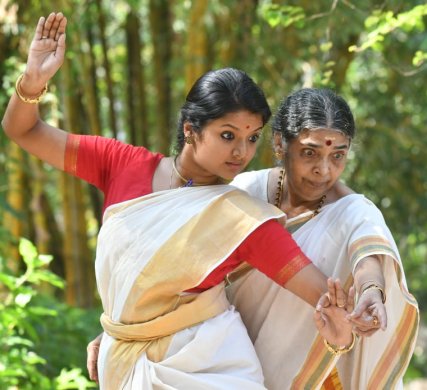
In 1974 she joined The Lawrence School, Lovedale, and completed her tenure there in the year 2000 as Head of the Dance Dept. She is also the founder / director of Natana Kaisiki, a research and performing center for female dance and theatre traditions of Kerala, established in 1979, which is an offshoot of Natana Kairali founded by her husband G. Venu, a renowned exponent of Koodiyattam, and author of several books on performing arts of Kerala. Natana Kaisiki imparts training mainly in Mohiniattam, Nangiar Koothu and Thiruvathirakkali. The Mohiniattam Kalari at Natana Kaisiki is well known for its authentic coaching styles and rigorous training schedules based on specially set syllabus. They have personalized Gurukulam style of coaching as well, which catches the talents very young. It also offers special short-term courses for teachers and senior students in advanced study of certain aspects of Mohiniattam like hand gestures, pure dance patterns and theory. Natana Kaisiki also arranges traditional type of Mohiniattam performances following the 'Kacheri' pattern from Cholkettu to Saptham and also lecture demonstrations if desired. Her choreographies are well known for the selection of themes, its treatment and the method of presentation and aesthetics. She pays a lot of attention to the music side too, ensuring right kind of accompaniments to enhance the performance on stage. Her choreography of Mahakavi Kumaran asan's 'Leela' is acclaimed by critics worldwide. She has choreographed many items such as varnams, keerthanams, and sapthams (ten of them including Bharatha Saptham and Veda Saptham). Her choreography of Mahakavi Kalidasa's famous Sanskrit poem 'Kumarasambhavam' was well acclaimed by dance lovers and critics. Her amazing interpretation of Gita Govindam in Mohiniattam style based on the acting techniques of Kerala tradition was another masterpiece. Same was the case with her interpretation of 'Kundalini Pattu' of Sreenarayana Guru. Her aptitude to pick great Malayalam poems and choreograph, did receive a lot of critical appreciation. She has done choreographies based on the works of poets Vailoppilly Sreedhara Menon and ONV Kurup, I am told. Besides having done pioneering work in reviving the desi aspects in the techniques and repertoire of Mohiniattam, Nirmala Paniker played an important role in reviving Nangiar Koothu in Irinjalakkuda, through her institute Natana Kaisiki. Her research work in establishing the links between dance forms practiced by the women of ancient Kerala and Tamilnadu is noteworthy. Her focus of studies was on 'Sangha kalam' (with particular stress on 'Pathittuppath' which was written in the context of Kerala where she says there are multiple references to typical dance forms practiced by women and how the kings of those days rewarded the dancers etc.), the times of Chilapathikaram, Dasakumaracharitham, Kulasekharapperumal, Manipravala Krithikal, Vyavaharamala, Karthika Thirunal Balarama Varma's 'Balaramabharatham,' Kunjan Nambiar's 'Thullal Kadhakal', Maharaja Swathi Thirunal's time and later the Kalamandalam era. Her book 'Keralathinte Lasya Peruma' (2015) provides very interesting reading. Besides this book, she has also authored the following books. * Mohini Attam-Hand Gestures of Hastha Lakshana Deepika (2007) * Nangiar Koothu-The classical dance theatre of Nangiars (1992 and 2005) - English * Nangiar Koothu-Charithravum Attaprakaravum published by Kerala Bhasha Institute (2014) * Natana Bharathi- Published by Kerala Kalamandalam (2014) * Mohini Attam-The Lasya Dance (co-authored with G Venu) - English (1983) * Mohini Attam Attaprakaravum Mudrakalum (co-authored with G Venu) - English and Malayalam (1983,1995 and 2004) She has participated in various dance workshops and arranged Mohiniattam performances around the globe apart from her many celebrated performances and lec-dems in India. She had the opportunity to do a lec-dem on Mohiniattam at Rietberg Museum, Zurich, along with Koodiyattam troupe and participate in the 50th Indian Independence year celebrations in Japan also with the Koodiyattam troupe. She worked as resource person of the world theater project, Sweden, and worked at both Mozambique and Sweden. 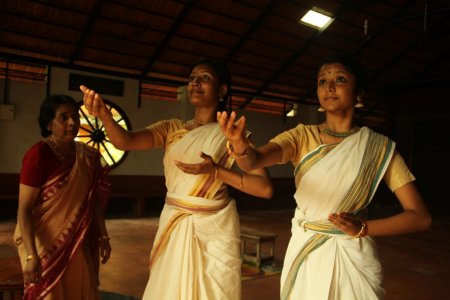
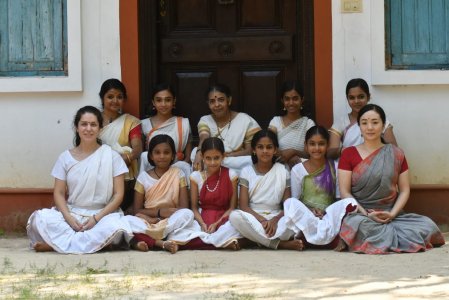
Nirmala Paniker's training of her disciples follows a meticulous and disciplined methodology carefully designed by her in such a way that when thestudents finish their course, they would have not only gained proficiency in the dance, but also have known how to do their own make-up and fix their costumes / accessories themselves with minimal assistance. She also trains them to introduce the items to the audience in Malayalam as well as English. This system of coaching calls for her special attention on each student, a reason why she does not take on too many students at a time. Some of her students who have made their name in Mohiniattam are Kapila Venu, Sandra Pisharody, Parvathy Vallabhan, Gopika G. Nath, Anima, Anupama Menon, Meenakshi Menon and a few others. Some of her awards and recognitions include Mannarashala Sreenagaraja Puraskaram (2019), Kerala Nrithya Natya Puraskaram (2017), Kerala Sangeetha Nataka Academy Fellowship (2016), Kerala Sangeetha Nataka Academy Award for Mohiniattam (2003), Senior Fellowship of the Govt.of India (1996 & 2002) and Junior Fellowship, Dept of Culture Govt.of India (1984). Natana Kairali, Irinjalakkuda is a hub of activities for traditional Kerala art forms under the able supervision of G Venu and Nirmala Paniker. Their only daughter Kapila Venu is a well-known exponent of Koodiyattam and Mohiniattam. She is also part of the team running the management of Natana Kairali and Natana Kaisiki. It was indeed an awesome experience visiting the couple at their abode and talking to Nirmala Paniker in the backdrop of a hermitage like environment with the sound of mizhavu (the instrument used in Koodiyattam) playing in the background presumably as part of an online program Venuji was hosting. 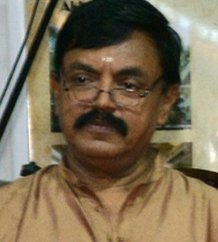 Venugopal S.K is a businessman in the field of Engineering projects, a singer, composer, accredited artiste in Light Music at All India Radio, auditioned and graded member of panel of speakers in Films Division of India, associated with Mohiniattam for over 4 decades as accompanying musician and music composer. Post your comments Please provide your name and email id along with your comment. All appropriate comments posted with name and email id in the blog will also be featured in the site. |